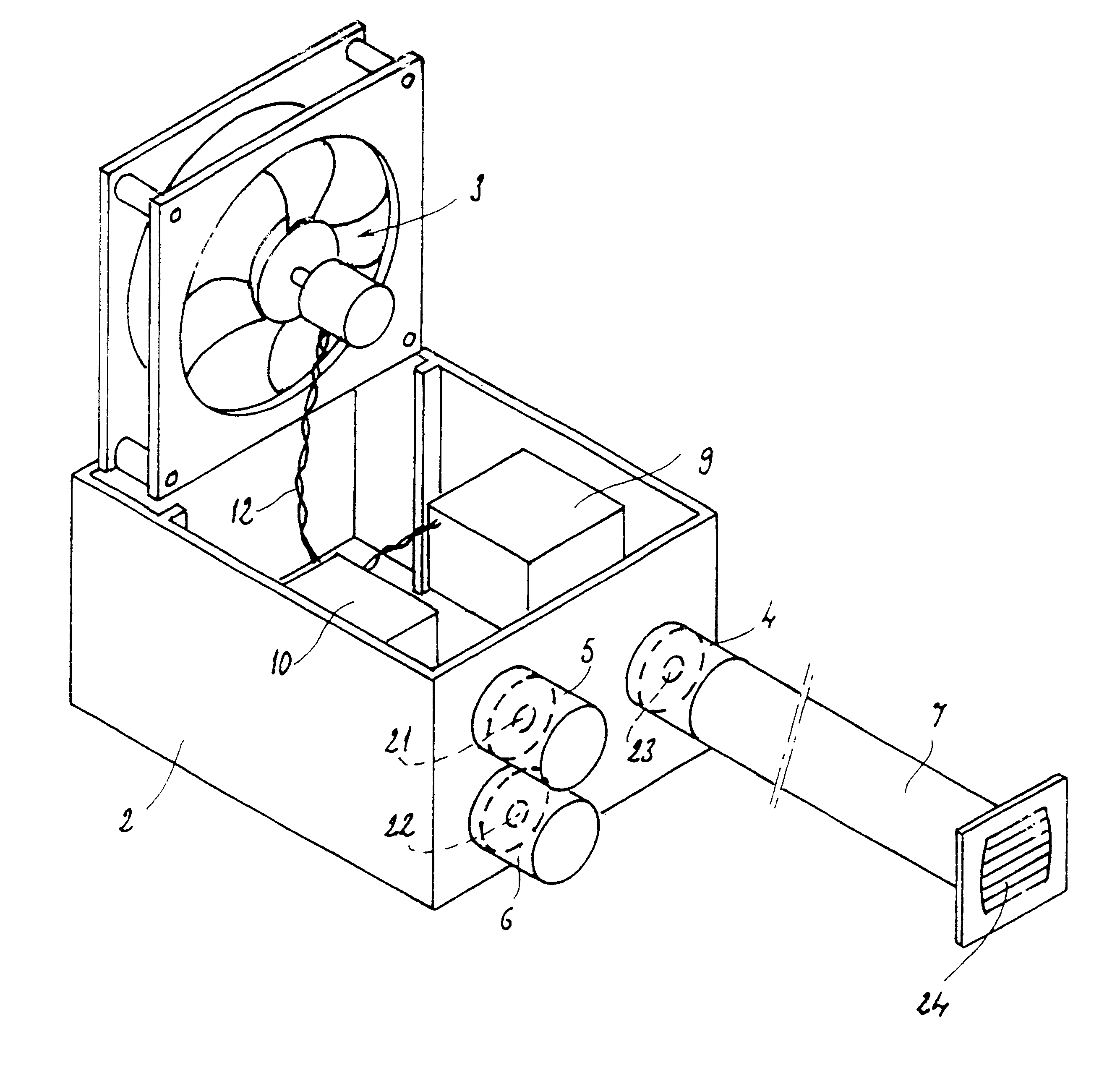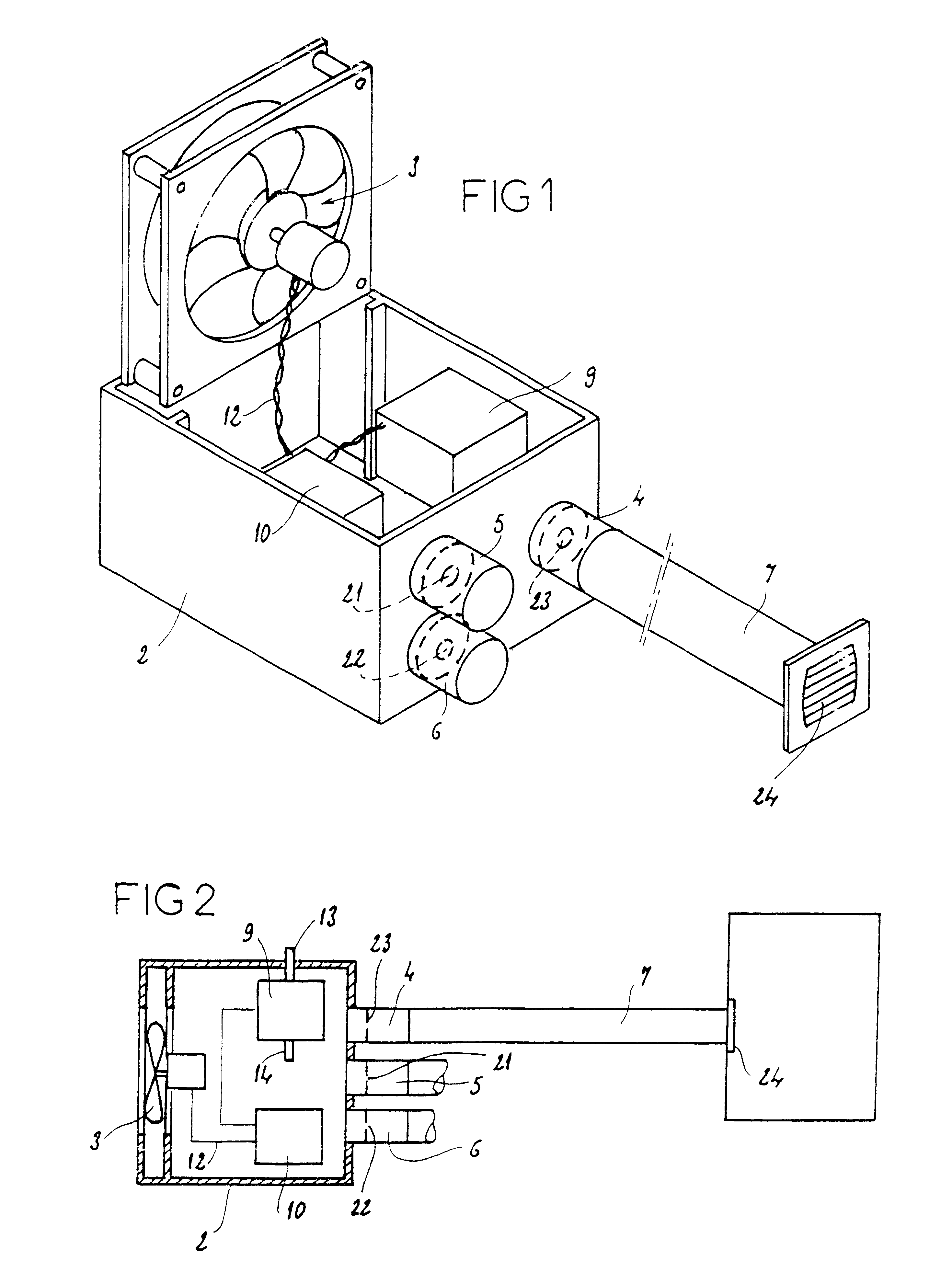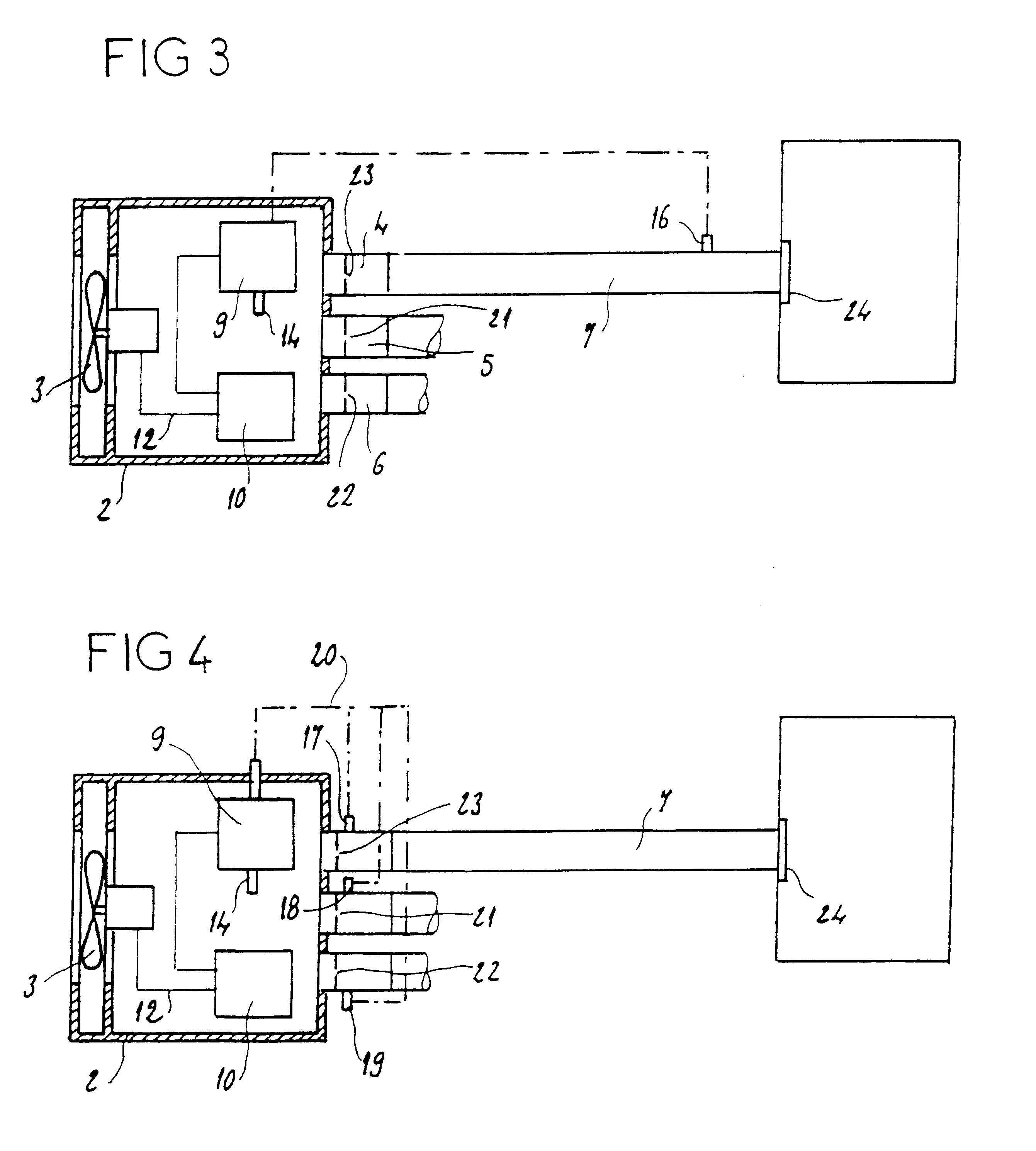Electronically regulated self-controlled ventilation unit
a self-regulated, electric technology, applied in ventilation systems, heating types, stoves or ranges, etc., can solve the problems of significant thermal losses of the premises, increased noise acoustic disadvantage, and higher noise generation
- Summary
- Abstract
- Description
- Claims
- Application Information
AI Technical Summary
Benefits of technology
Problems solved by technology
Method used
Image
Examples
first embodiment
According to the invention depicted in FIG. 2, the differential-pressure sensor 9 measures the absolute pressure in the casing 2, that is, the pressure difference between the inside and the outside of the casing 2. To this end, a pressure tapping tube 13 opens outside of the casing and another pressure tapping tube 14 opens into the casing.
second embodiment
FIG. 3 depicts the invention in which the same elements are denoted by the same references as before. In this case, the differential-pressure sensor 9 measures the pressure difference between the inside of the casing 2 and a point 16 situated on the duct 7 beyond the orifice 23 with respect to the casing 2.
third embodiment
FIG. 4 depicts the invention in which the same elements are denoted by the same references as before. In this case, three tubes 17, 18 and 19 respectively, which meet as a common tube 20 connected to the pressure sensor 9, make it possible to determine the mean pressure in the ducts connected to the tappings 4, 5 and 6. The differential-pressure sensor 9 also takes the pressure inside the casing 2 via the tube 14. The sensor 9 measures the pressure difference between the mean pressure inside the ducts 7 and the pressure inside the casing 2, the orifices 21, 22 and 23 being arranged between the pressure tappings 4, 5, and 6.
PUM
 Login to View More
Login to View More Abstract
Description
Claims
Application Information
 Login to View More
Login to View More - R&D
- Intellectual Property
- Life Sciences
- Materials
- Tech Scout
- Unparalleled Data Quality
- Higher Quality Content
- 60% Fewer Hallucinations
Browse by: Latest US Patents, China's latest patents, Technical Efficacy Thesaurus, Application Domain, Technology Topic, Popular Technical Reports.
© 2025 PatSnap. All rights reserved.Legal|Privacy policy|Modern Slavery Act Transparency Statement|Sitemap|About US| Contact US: help@patsnap.com



